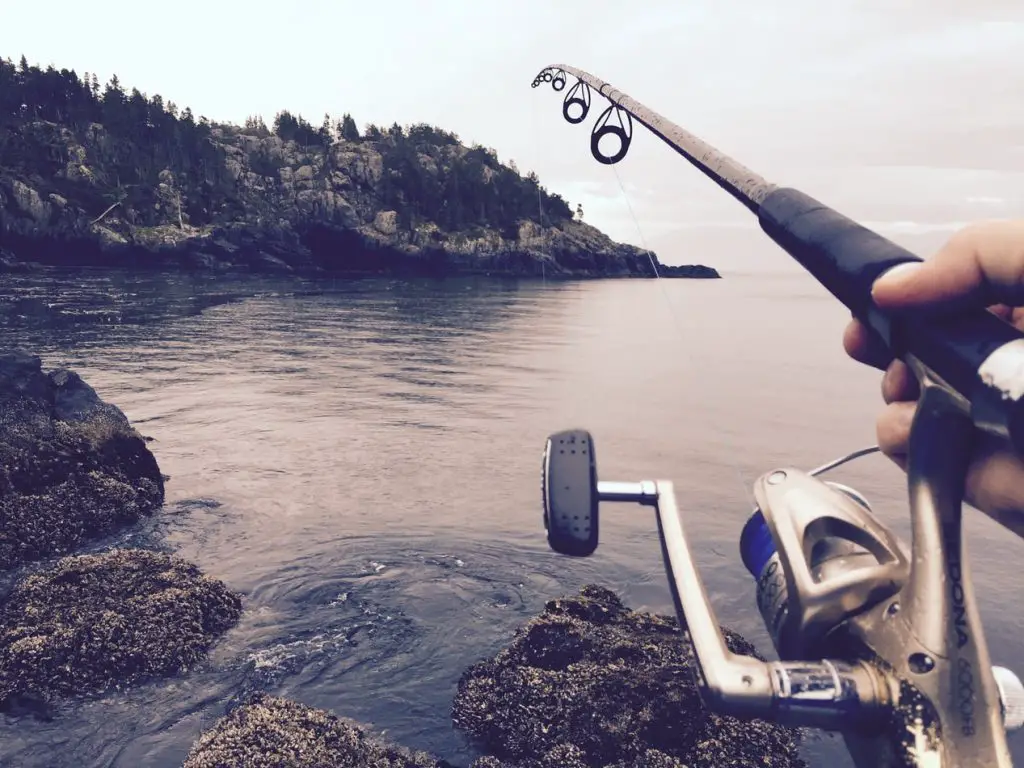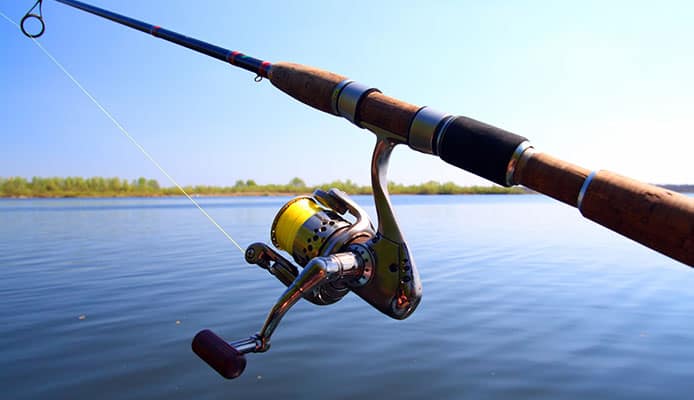If your planned backpacking trip takes you right next to beautiful rivers and you’re into fishing, you are probably wondering about how to pack all the things you originally wanted to plus your fishing gear.
Most fishermen feel a bit down in these situations if they don’t own compact (collapsible) rods, but know that there’s always a solution or even a couple of them.
Today we’re going to talk at length about some of the most efficient ways to properly pack your fishing gear when you’re going on a backpacking trip.
How to carry fishing rods when backpacking?
Since fishing rods are usually the largest, most unwieldy components of your backpacking gear, the first thing you’ll want to do is switch to a telescopic model. Theoretically, you can pack any kind of fishing rods, and each type requires a different approach.
Packing Fly Rods
Fly rods are not extremely popular and are even considered as ‘outdated’ in some circles. They require hours of setup and preparation and aren’t as versatile as casting, spinning, or telescopic rods.
Nevertheless, there are numerous people who prefer the traditional modes of fly fishing, who for whatever reason refuse to ‘upgrade’ to more modern, and more conventional rod types.
Now, the first thing that should be on your mind when packing fly rods is that their weight is in huge disproportion to their actual size. You might feel that they’ll take up less space than they actually will. The good thing about them being light is that you won’t be overly encumbered by them.
The bad thing is that they take up a lot of space, especially those models with reinforced grips. They’re typically not too durable, so you should always position them upwards in your backpack.
Packing Casting Rods
Casting rods are immensely more popular than fly rods, but they’re not easier to back in a backpack. Their huge size is ‘compensated’ for with a thinner profile, so they actually take up a bit less space than fly fishing rods.
However, if you’re using a casting rod you are probably also using a variety of different baits, which means that you’ll have to make some space for that too.
The rods themselves can be easily disassembled in 3-4 pieces and, just like with fly rods, they should be placed in an upright position lest they break under the weight of the other gear you’re carrying.
What’s really troublesome in this particular scenario is that casting fishing rods have plastic parts along the rod called ‘eyes’.
These plastic components are generally not flimsy per se, but you would risk breaking them if you simply back the rod pieces next to sturdy objects, such as barbecue pieces, or anything made of metal for that matter.
You will be able to preserve both the rods and the ‘eyes’ by separating them from the other items with any type of cushioning. You can be as creative as you like here; you can either use a towel or even wrap the rods with plush.
Packing Spinning Rods
Spinning rods are lighter and somewhat smaller than casting rods, but they’re even harder to pack due to the increased amount of ‘eyes’ they have onboard.
Now, the diversity of spinning rod models is phenomenal, and there are numerous rods that don’t have so many ‘eyes’, but don’t be surprised to find a model with more than 10.
Again, this is the biggest reason why they’re not so easy to stuff inside a backpack. They’re easy to assemble and put back together, for all that matters, but their eyes are bigger and pointier, which means that you’ll need to find a different kind of technique to carry them.
One of the best ways, although it’s pretty situational, is to affix them to the side of your backpack. Putting them in a side pocket won’t cut it, so you’ll need to be creative with some ropes.
Ideally, you should make a balance so that the equal number of pieces is on each side. Connect the pieces with some rope and use whatever tools necessary to keep them from falling or dangling; tying them to the backpack itself is an option too.
Packing Telescopic Rods
Lastly, we have telescopic rods. They’re the least demanding type of all we’ve covered so far, and in most cases, you’ll find the packing method as obvious and self-explanatory.
Basically, telescopic rods are superior in terms of compactness and portability because they feature a retractable design. They do have ‘eyes’, just like every other type of fishing rod, but theirs are pretty close together when you retract the rod.
This means that you’ll only need to worry about their tip, rather than the full length of the rod and its pieces. Since they can retract to a smaller form, they don’t need to be disassembled, which means that they consequentially take up the least bit of space possible.
You can choose from a variety of ways of positioning them; they can be placed facing upwards, they can be horizontally placed at the very top of the backpack, or you can put them in your backpack’s side pockets.
Frequently Asked Questions
What is the best way to carry fishing rods for backpacking?
The only sure-fire way to carry your fishing rods is in a special carry bag that can typically be purchased in any fishing store. These carry bags are dimension-specific for each model, which means that any other form of backpack needs to be ‘adapted’ to them (by separating the rods from other items).
Should I use another backpack strictly for the rods and fishing gear?
It depends on how ‘light’ you are traveling. If your backpack is heavy and packed only with a couple of essential items, you should consider buying fishing rod carry bags.
They’re lightweight and very easy to carry, which makes them perfect for any kind of scenario. People who are traveling ‘heavy’ typically have limited options in this regard.


Leave a Reply